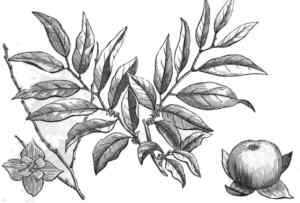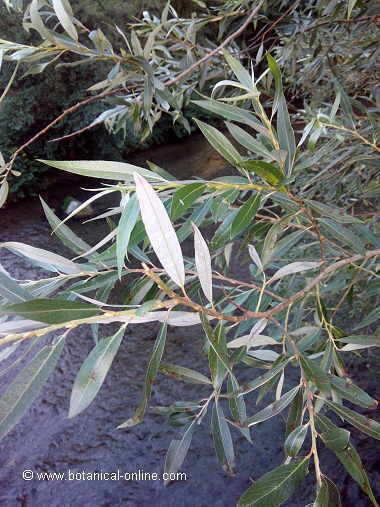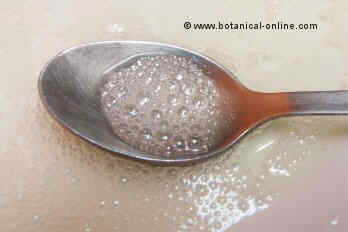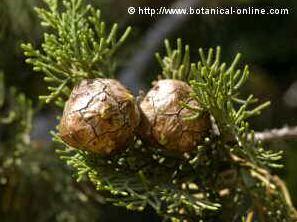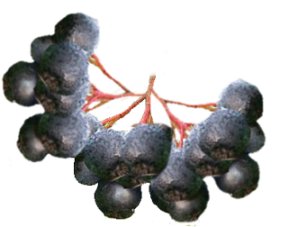Contents
What are poisonous plants?
A poisonous plant is a plant that, when ingested or touched, in the required quantity, can be deadly or fatal to an organism
What are the poisons used for?
Since ancient times, we have used plants as a food source. Of them, we get fruits, leaves, roots and stems that give us a huge source of nutrients. However, as a result of an adaptation to the environment or as a result of their metabolic processes, plants have developed some components that are toxic.
Since prehistoric times humans have had to experience the properties of plants in their own body. Sometimes we have claimed the reward to find the edibility of a species, sometimes we have had to pay with with our life the lack of experience. To know which plants were edible and which ones were poisonous in prehistoric times was a basic need for humans.
Besides being a matter of survival, humans have always felt a great attraction to poisonous or toxic plants, not only for what they represent but because, by knowing them, they could extract those principles and use them to their advantage.
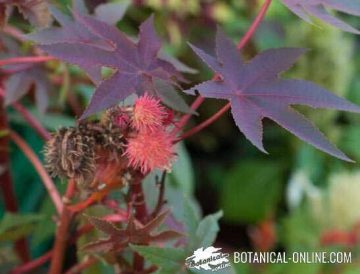
Thus, some potent poisons were used to eliminate enemies. For example, Men made wooden arrows using the yew (Taxus baccata) with fatal injuries that occurred in their opponents. With hemlock (Conium maculatum) some men developed both a mortal tea, widely used by the classics, as Socrates tells us, to experiment in their own flesh the symptoms of poisoning as he wrote it.
Further to this day, we have continued to use these herbal drugs with evil purpose, it suffices to recall that the juice from the seeds of castor oil plant (Ricinus communis), rich in ricinine, one of the most potent drugs in the plant kingdom, was used to fill the end sharp tip of an umbrella for producing fatal injuries in political enemies.
Equally, vegetal poisons have been used to kill animal species that could become dangerous pests. Strychnine, an alkaloid that is obtained from species of Strychnos, especially of the nux vomica (Strychnos nux-vomica), is used in the composition of many rat poisons. It is also being used today in a malignant and unfortunate way to eliminate some animal species that compete with the hunters.
Many foxes have died because they have eaten fragments poisoned with strychnine, but also many hunters’s dogs, too and many damages have be produced with this bad habit in the human intestines by eating flesh of some animals that, with one way or another, have entered in contact with this poison through the food chain.
Main components of poisonous plants
Many are the poisonous components of the plants. Among them we would emphasize the following:
Alkaloids
Alkaloids are bitter-taste nitrogen-containing compounds. There are approximately 5000. They are not unique to plants since they are also found in the animal kingdom. Some of them may be found in the skin of certain animals, such as bufotenin, excreted by toads.
This is a batrachotoxin, produced by frogs of the genus Phyllobates, one of the most powerful poisons in the world, especially that one of the Phyllobates terribilis, a species capable of killing 10 men with 1 milligram.
Curiously, this alkaloid also appears in the feathers of the birds of New Guinea Pitohui genre and produces a standstill in the member that touches it. Other alkaloids are produced by small animals such as centipedes, ants, ladybugs, etc.
Most of the alkaloids, however, belong to the vegetable kingdom, so that 10% of plant species contain some of these compounds. Sometimes they appear in the whole plant, for example, the yew (Taxus baccata) a tree whose only edible part is the aryl extremely appreciated by the birds. The rest is poisonous. Alkaloids generally abound around these parts of the plants (More information in Alkaloids)
Glycosides
Glycosides are derivatives of sugars that are easily hydrolyzed upon contact with an enzyme. Among these we would mention the following:
– Cyanogenic glycosides: Those chemical that, ingested or chewed, produce hydrolyzed cyanide acid (HCN), that is what is commonly known as hydrogen cyanide, one of the most potent poisons.
This product is extremely poisonous because it prevents cellular respiration. (Prevents oxygen from being absorbed by blood cells). If ingested in small quantities, sulfur is transformed by the action of the enzyme rhodanese. Taken in moderate amounts, it produces vomiting, difficulty breathing, limb weakness, blurred vision.
When ingested in larger amounts, it brings about seizures, loss of consciousness and cardiac arrest. One way to diagnose its presence in the body is checking the breathing because it has a significant smell of almonds. We can also deduct someone has ingested it when her/his lips and mucous membranes of the body become bluish. (More information about Cyanogenic glycosides)
– Cardiac glycosides: they act on the heart muscle, regulating its beat and increasing its power, so they are used to treat heart failure or rhythm problems. Used in inappropriate doses are very dangerous because they speed the heart rate causing tachycardia, and other negative effects on the digestive system, nervous system and muscles. When they exceed certain levels cause death by cardiac arrest. (More information on cardiac glycosides)
Tannins
Tannins are polyphenolic compounds very astringent and with a bitter taste. They are divided into hydrolysable and condensed. Industrial properties have been used for tanning leather, to remove water from the muscle fibers. The Egyptians used the fruits of acacia for this purpose.
The chestnut tree (Castanea sativa) is well known to produce a hydrolysable tannin used in leather industry. Tannins in folk medicine used to combat diarrhea, hemorrhoids, heal wounds, as bactericides and other poisons and antidotes. (More information about tannins)
Oxalates
Oxalate (calcium and magnesium oxalate) are produced when combining plant sodium oxalate with calcium and magnesium in the body.
They are toxic to the kidneys, because they form oxalic acid crystals that do not dissolve and can be precipitated in many parts of the body including the brain. They can cause damage to the kidneys, arteries, stomach, etc.(More information about oxalates)
![]() More information about oxalates in the diet.
More information about oxalates in the diet.
Photo-coumarins
They are compounds that exert a phototoxic role. Externally, the skin lesions occur when these compounds react with sunlight. Such reactions are manifested as dermatitis, skin lesions, sunspots, etc.
When ingested, they cause internal injuries in the liver.
Among the plants that contain these elements, we can mention such well known plants as the fig tree (Ficus carica), Saint john’s wort (Hipericum perforatum), fennel (Foeniculum vulgare), celery (Apium graveolens), the yarrow (Achillea millefolium) or parsley (Petroselinum crispum)
Essential oils
These are components to be used only in appropriate doses and external use, as have a high concentration of active ingredients, which, if we exceed the allowed amount, are extremely poisonous.
Externally, they can affect the skin producing dermatitis, central nervous system, liver, and are extremely dangerous when used in pregnant women because they can cause abortions.
Together we can mention those belonging to many Mediterranean herbs such as sage (Salvia officinalis), rosemary (Rosmarinus officinalis), the mint (Mentha sp), wild marjoram (Origanum sp)
Saponins
Saponins are plant glycosides characterized by foaming in the water when mixed and stirred, which has earned them their status as natural soaps and has led some plants such as common soapwort (Saponaria officinalis) were used as soap for a long time.
*More information about saponins
![]() More information on medicinal plants
More information on medicinal plants


